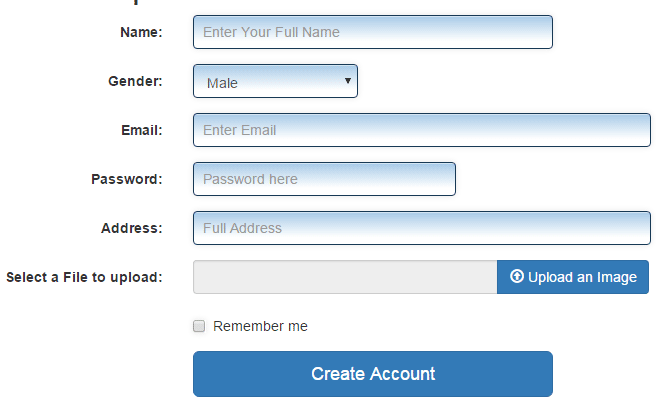Php Upload File Without Submit
Posted : adminOn 9/12/2018POST method uploads This feature lets people upload both text and binary files. With PHP's authentication and file manipulation functions, you have full control over who is allowed to upload and what is to be done with the file once it has been uploaded.
PHP is capable of receiving file uploads from any RFC-1867 compliant browser. Note: Related Configurations Note See also the,,, and directives in php.ini PHP also supports PUT-method file uploads as used by Netscape Composer and W3C's Amaya clients. See the for more details. The MAX_FILE_SIZE hidden field (measured in bytes) must precede the file input field, and its value is the maximum filesize accepted by PHP. This form element should always be used as it saves users the trouble of waiting for a big file being transferred only to find that it was too large and the transfer failed.
Without the requirements above, the file upload will not work. Other things to notice: The type='file' attribute of the tag shows the input field as a file-select control, with a 'Browse' button next to the input control; The form above sends data to a file called 'upload.php', which we will create next. This helped me quite a bit: Ajax Upload; A file upload script with progress-bar, drag-and-drop. I can post the code I wrote if you want. Jmansa 2011-08-23 05:54:46 UTC #3.

Keep in mind: fooling this setting on the browser side is quite easy, so never rely on files with a greater size being blocked by this feature. It is merely a convenience feature for users on the client side of the application. The PHP settings (on the server side) for maximum-size, however, cannot be fooled. Descargar Controlador Xerox Phaser 4500. Note: Be sure your file upload form has attribute enctype='multipart/form-data' otherwise the file upload will not work. The global will contain all the uploaded file information.
Hp Color Laserjet 2500 Pcl 6. Its contents from the example form is as follows. Note that this assumes the use of the file upload name userfile, as used in the example script above. This can be any name. The original name of the file on the client machine. The mime type of the file, if the browser provided this information.
An example would be 'image/gif'. This mime type is however not checked on the PHP side and therefore don't take its value for granted. The size, in bytes, of the uploaded file. The temporary filename of the file in which the uploaded file was stored on the server.
The associated with this file upload. Files will, by default be stored in the server's default temporary directory, unless another location has been given with the directive in php.ini.
The server's default directory can be changed by setting the environment variable TMPDIR in the environment in which PHP runs. Setting it using from within a PHP script will not work. This environment variable can also be used to make sure that other operations are working on uploaded files, as well.
For clarity; the reason you would NOT want to replace the example script with $uploaddir = './'; is because if you have no coded file constraints a nerd could upload a php script with the same name of one of your scripts in the scripts directory. Given the right settings and permissions php-cgi is capable of replacing even php files. Imagine if it replaced the upload post processor file itself. The next 'upload' could lead to some easy exploits.